Seen up close, the tiny English Daisy, Bellis perennis, can be a feast for the eyes. I eat the flowers and leaves, often, even though they are too small to be a feast all by themselves. Let's take a closer look.
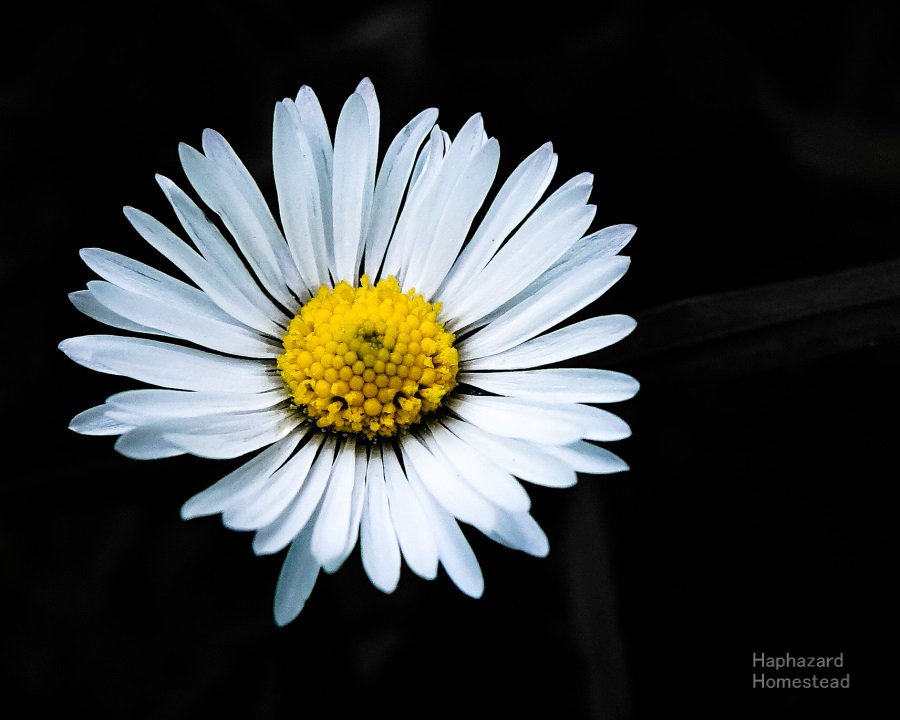
This is the photo I am entering in the PhotoChallenge. Details: SONY RX-10, f3.2, 1/640 sec, ISO 320, -1.7 bias, 9mm
The Flowers and Plants
I like how the photo I'm entering into the PhotoChallenge makes the English Daisy look so formal. But in reality, they are anything but formal.
Instead, English Daisies seem cheerful, enthusiastic, and even exhuberant in the spring and early summer sun. Yes, they like the sun! Their flowers close for the night and open again in the morning. The little flowers are usually all white, but some can be tinged with pink.
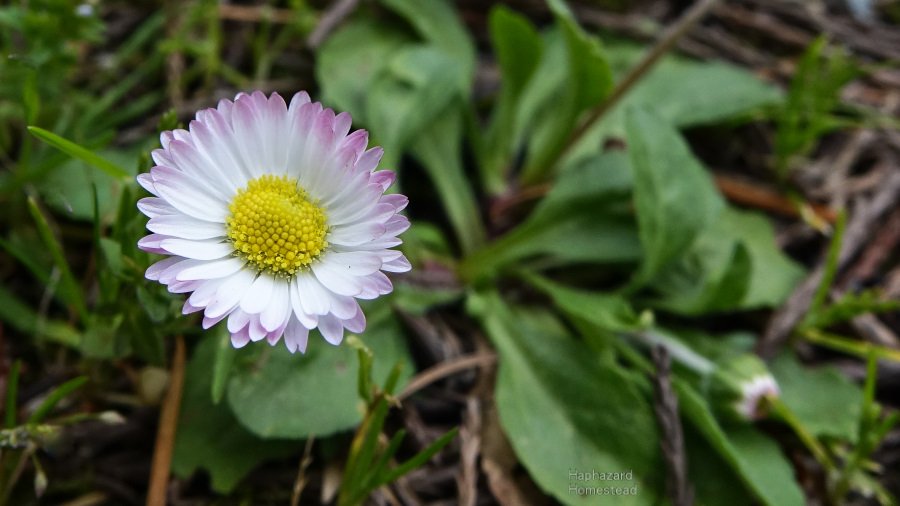
Yes, they are small plants! If they grew as single plants, it wouldn't be worth the effort to harvest them. But you can see that they spread and grow into big patches. That growth habit makes some folks call them a problem, especially in lawns. They aren't necessarily a noxious weed, but they can be invasive. That makes them fair game for picking as much as you want for eating - as long as they are in uncontaminated soil and nobody is treating them with "weed and feed" or pesticides.
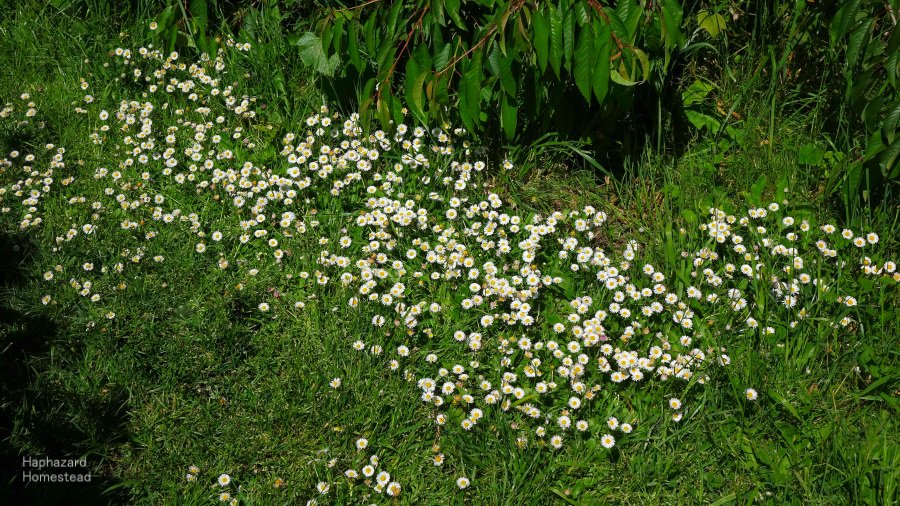
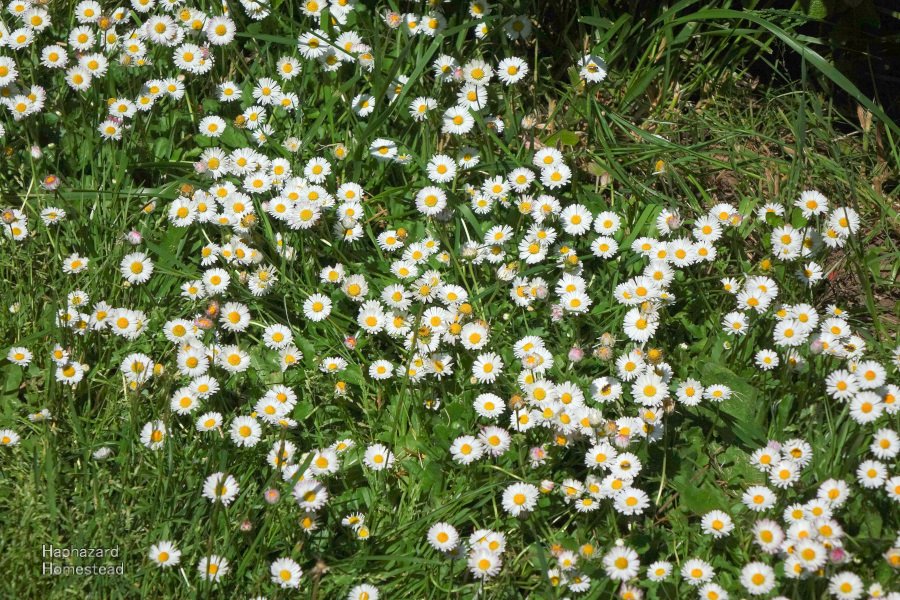
Picking and Eating English Daisies
I eat the flowers and the leaves a lot. It's easy to pick a handful of flowers to add to any salad. Picking the leaves takes more effort. Here in Oregon's Willamette Valley, the leaves can be good any time of year. In the winter, I look for the leaves that stick up from ground level - they aren't the old leaves and they haven't been stepped on! Because they are so close to the ground, the leaves do need to be washed well -- they can have a lot of mud or grit on them.
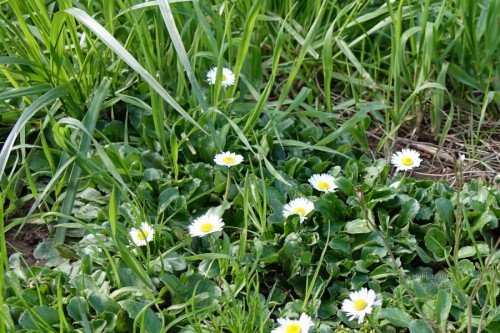
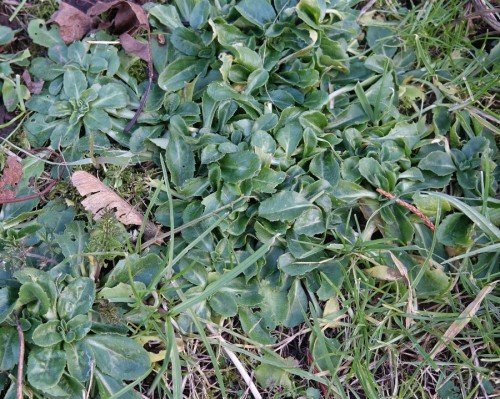
Now that you have seen the English Daisy up close, can you identify it? I've posted a lot of weed salads here on Steemit. I've got four posts that show the English Daisy in the field and in the kitchen, set up as a quiz so you can test yourself.
Those four posts all show how I use the English Daisy in making wonderful weed salads. I've got another post that shows a bunch of other salads where I've used English Daisies, too. Alone, the leaves taste a little silvery, immediately followed by a growing sweetness- kind of like the follow-on sweetness of an artichoke. In a mixed salad, the taste of the flowers and leaves blends in with all the other plants, to make something that tastes better than eating each plant alone.
- Winter Weed Salad with a quiz
- Paleo Winter Weed Salad with a quiz
- Another Winter Weed Salad with a quiz
- Wild Extravaganza Salad with a quiz
- Spring Salads from Weeds, Tree Leaves, Flowers, and Seeds
I hope you enjoyed this closer look at English Daisies. And I hope you get to enjoy some tasty Bellis perennis yourself sometime!
What Do You Think?
Could you identify the Bellis perennis in any of my past posts? Do you have any Bellis perennis near you? Do you eat English Daisy flowers or leaves? Would you try eating this plant if you could? I would like to know!
I write about foraging because I believe that we can all have lives that are richer, more secure, more grounded, and more interesting by getting to know the plants and the land around us – in our yards, our parks, and our wilderness.
I would like Steemit to be the premier site for Foraging on the Internet! If you have any thoughts about foraging, or experiences to share, write a post and be sure to use the Foraging tag. And check out the @foraging-trail to see curated quality posts about foraging. Happy Foraging!
** Haphazard Homestead **
*** foraging, gardening, nature, simple living close to the land ***

